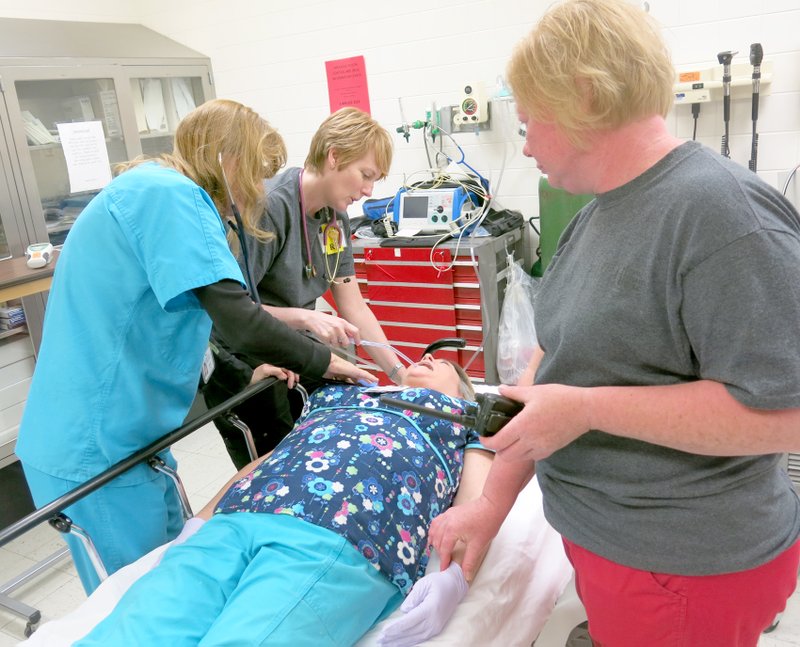GRAVETTE -- Employees at Ozarks Community Hospital sprang into action last Wednesday when the announcement came over the intercom that the annual disaster drill had started. They were ready to execute a plan which had been several months in the making.
Steve Oler, OCH disaster preparedness coordinator, had directed hospital staff members to assemble in the main lobby and sign in. As the disaster scenario unfolded, each was given a particular assignment and given instructions on how to proceed.
Brent Cox and Amy Martens, from Global Emergency Management Solutions in Paragould, took over Oler's office and set up a command post. From there they directed and issued directions for each step in the drill.
GEMS is a contract company which organizes and facilitates the drills. Afterward, they conduct follow-up assessments and write reports for each hospital that participates.
The scenario developed for the OCH disaster drill was that of a widespread pandemic flu. The hospital suddenly had an influx of patients with fever, nausea and vomiting. To add to the difficulties, several of the staff members were struck with the illness and had to leave their duty stations.
Not only were OCH workers faced with treating a large number of patients, they were doing it short-handed. Then, in the middle of the flu epidemic, another crisis developed. A large explosion at 123 Limekiln Road brought in several more patients with severe burns. EMS noted the explosion came from several improvised explosive devices being made by a group of men on the terrorist watch list. It was believed at least five men were attempting to plant explosives at the hospital, as well.
A patient tracking command was set up just outside the OCH emergency room doors. Each patient who came in was tagged on arrival and given a label denoting the severity of his or her symptoms. Tabs of various colors kept track of where each patient was sent within the hospital. Some of the less severe cases were diverted to the clinic. When the victims from the explosion began to come in, their conditions were assessed on arrival and some with the more serious injuries were stabilized and transferred to other hospitals. Since OCH is a critical access hospital, not a critical care hospital, it can treat lacerations and broken bones but is not equipped to deal with amputees or intensive care unit patients.
One room in the administrative wing of the hospital was set up as an incident command center. A team composed of administrators and nursing staff gathered there to monitor the drill.
"We try to make it as real as possible," said Dalton Holcomb, OCH infectious control officer.
The Healthcare Facilities Accreditation Program and the Hospital Preparedness Program require hospitals to have disaster response plans in place and to conduct disaster drills periodically for improvement and training purposes. OCH holds two drills a year, one on a larger scale. Some staff members are given jobs outside their normal roles in order to give them training in other areas.
Gravette was one of 14 hospitals which participated in drills last Wednesday. Gravette Fire Department was a part of the local drill, as its staff and ambulances were used to transport the patients. Austin Drug and Teasley Drug, Benton County Health Department, the Benton County Office of Emergency Management and the Arkansas Department of Health were all involved.
Oler called the disaster drill a success.
"These exercises play an important role in testing our policies and training new staff," Oler said. "Every exercise is truly a success because it provides everyone an opportunity to practice and learn how to respond to a disaster."
General News on 04/08/2015

